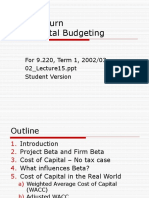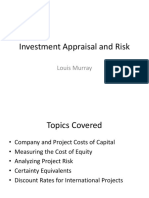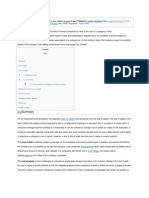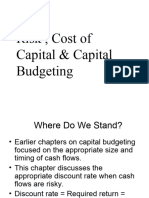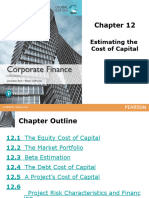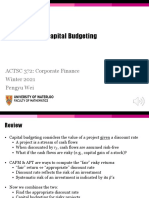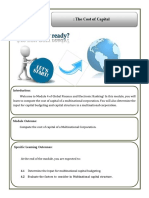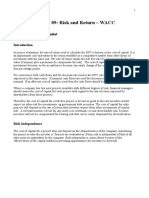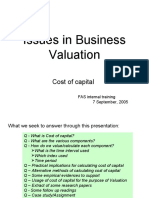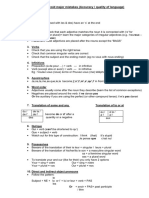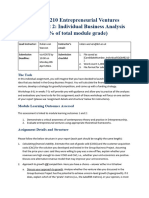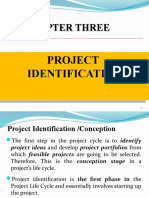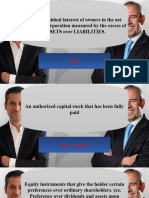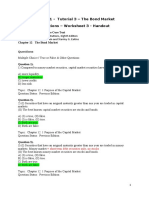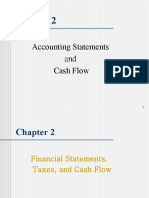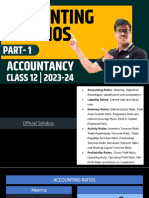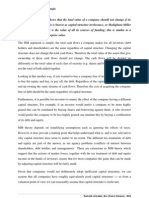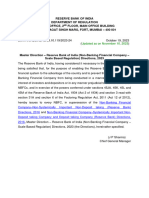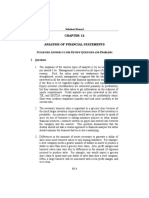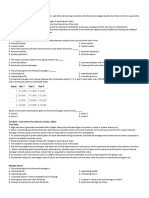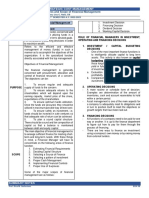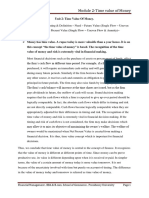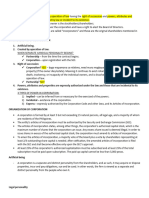0% found this document useful (0 votes)
22 views13 pagesW8 Presentation
The document discusses a firm's cost of capital and how to calculate it. It also discusses adjusting discount rates for individual projects that have different risk levels than a firm on average. Methods for estimating asset betas for projects with different financing mixes or operational leverage are presented.
Uploaded by
tfqg6yn6gjCopyright
© © All Rights Reserved
We take content rights seriously. If you suspect this is your content, claim it here.
Available Formats
Download as PDF, TXT or read online on Scribd
0% found this document useful (0 votes)
22 views13 pagesW8 Presentation
The document discusses a firm's cost of capital and how to calculate it. It also discusses adjusting discount rates for individual projects that have different risk levels than a firm on average. Methods for estimating asset betas for projects with different financing mixes or operational leverage are presented.
Uploaded by
tfqg6yn6gjCopyright
© © All Rights Reserved
We take content rights seriously. If you suspect this is your content, claim it here.
Available Formats
Download as PDF, TXT or read online on Scribd
/ 13
